The Power of Multi Channel Home Theater: Elevate Your Home Entertainment
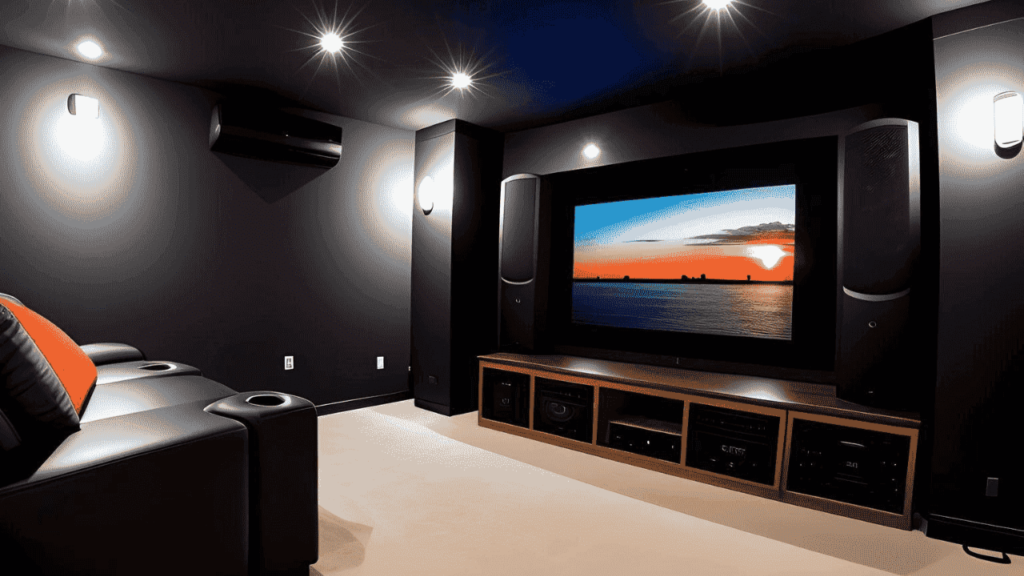
What is Multi Channel Home Theater
A multi channel home theater system is a setup designed to deliver immersive audio and visual experiences in the comfort of your home. It typically includes multiple audio channels, speakers, and often a high-definition video display or projector. The primary purpose of a multi channel home theater is to recreate the cinematic experience by providing high-quality audio and video.
Here are some key components and considerations for setting up a multi channel home theater:
1. Audio Channels: Multi-channel audio systems are typically categorized based on the number of audio channels they support. The most common configurations are:
– 2.0 or 2.1: Two main speakers (left and right) with or without a subwoofer. This is a basic stereo setup.
– 5.1: Five main speakers (front left, front center, front right, rear left, rear right) and one subwoofer for low-frequency effects.
– 7.1: Adds two more speakers to the 5.1 setup, typically placed on the sides or overhead.
– 9.1: Adds additional overhead speakers for a more immersive sound experience.
– Dolby Atmos: A more advanced system that includes height channels for a three-dimensional sound experience. Common configurations are 5.1.2, 7.1.2, or even 9.1.4, indicating the number of main speakers, subwoofers, and overhead speakers.
2. AV Receiver: An AV (audio-video) receiver is the heart of the home theater system. It receives audio and video signals from various sources (like Blu-ray players, game consoles, streaming devices) and amplifies and routes them to the appropriate speakers and display. Look for a receiver that supports the audio and video formats you plan to use and has enough channels for your speaker setup.
3. Speakers: High-quality speakers are crucial for good audio reproduction. Consider the size of your room, the placement of speakers, and your budget when choosing speakers. Common types of speakers include tower speakers, bookshelf speakers, center channel speakers, surround speakers, and subwoofers.
4. Video Display: For the visual component of your home theater, you can use a large flat-screen TV or a projector and screen. The choice depends on your preferences, room size, and budget.
5. Source Components: You’ll need devices to play audio and video content, such as Blu-ray players, streaming devices, gaming consoles, and cable/satellite boxes.
6. Cables and Wiring: Ensure you have the necessary cables and wiring to connect all your components to the AV receiver and display. High-quality HDMI cables are usually essential for transmitting video and audio signals.
7. Room Acoustics: Consider the acoustics of your room when placing speakers and furniture. You might need acoustic treatments to improve sound quality.
8. Calibration and Setup: Properly calibrating your home theater system ensures that the audio and video components work harmoniously. Most AV receivers have built-in calibration systems, and professional calibration services are also available.
9. Remote Control: A universal remote control or a smartphone app for controlling your AV receiver and other components can simplify the user experience.
10. Seating and Comfort: Invest in comfortable seating arrangements for an enjoyable viewing experience.
Building a multi channel home theater can be a fun and rewarding project, but it also requires careful planning, especially when it comes to room layout, speaker placement, and equipment selection. Make sure to do your research and, if needed, consult with experts to achieve the best possible audio and video quality in your home theater.
Types of Multi Channel Home Theater
Multi channel home theater systems come in various configurations, each offering a different level of audio immersion. Here are some of the most common types:
1. 2.0 or 2.1 Channel System:
– 2.0: A basic stereo setup consisting of two main speakers (left and right) without a subwoofer.
– 2.1: Similar to 2.0 but includes a subwoofer for enhanced bass response. This setup is often referred to as “2.1” because of the two main speakers and the subwoofer.
2. 5.1 Channel System:
– A 5.1 channel system includes:
– Three front speakers: Front left, front center, front right.
– Two rear speakers: Rear left, rear right.
– One subwoofer (the “0.1” in 5.1) for low-frequency effects (bass).
– This setup provides a surround sound experience and is commonly used for home theaters.
3. 7.1 Channel System:
– Expands upon the 5.1 system by adding two additional rear surround speakers:
– Three front speakers: Front left, front center, front right.
– Two rear surround speakers: Rear left, rear right.
– Two rear back surround speakers: Rear back left, rear back right.
– One subwoofer (the “0.1” in 7.1).
– The extra rear speakers provide a more immersive audio experience.
4. 9.1 Channel System:
– Further expands the surround sound experience by adding two height or overhead speakers:
– Three front speakers: Front left, front center, front right.
– Two rear surround speakers: Rear left, rear right.
– Two rear back surround speakers: Rear back left, rear back right.
– Two height/overhead speakers: Front height left, front height right.
– One subwoofer (the “0.1” in 9.1).
– This configuration enhances audio depth and adds a three-dimensional aspect to the sound.
5. Dolby Atmos and DTS:X Systems:
– These systems can vary in configuration but typically involve adding height or overhead speakers for a three-dimensional audio experience.
– Examples include 5.1.2 (5 main speakers, 1 subwoofer, 2 height speakers) or 7.1.4 (7 main speakers, 1 subwoofer, 4 height speakers).
– Dolby Atmos and DTS:X support object-based audio, allowing sound to move freely in a three-dimensional space.
6. Soundbar Systems:
– Soundbars are compact, all-in-one audio solutions designed to improve TV sound quality.
– They may come in configurations like 2.0, 3.1, or 5.1, combining front speakers, a center channel, and sometimes a subwoofer.
– Soundbars are a convenient option for smaller spaces or those seeking a simplified setup.
7. Custom and High-End Systems:
– Custom multi-channel systems can be tailored to the room’s size and acoustics, often involving more advanced configurations and high-quality components.
– High-end systems may include audiophile-grade speakers, amplifiers, and acoustic treatments to achieve the best possible audio quality.
The choice of a multi channel home theater system depends on your budget, room size, and desired audio experience. Smaller spaces might benefit from a 2.1 or 5.1 system, while larger rooms could accommodate 7.1, 9.1, or even more advanced configurations. The addition of height or overhead speakers, as seen in Dolby Atmos and DTS:X setups, can take the audio experience to the next level by creating a three-dimensional soundstage.
Get Some Best Multi Channel Home Theater For You From Amazon
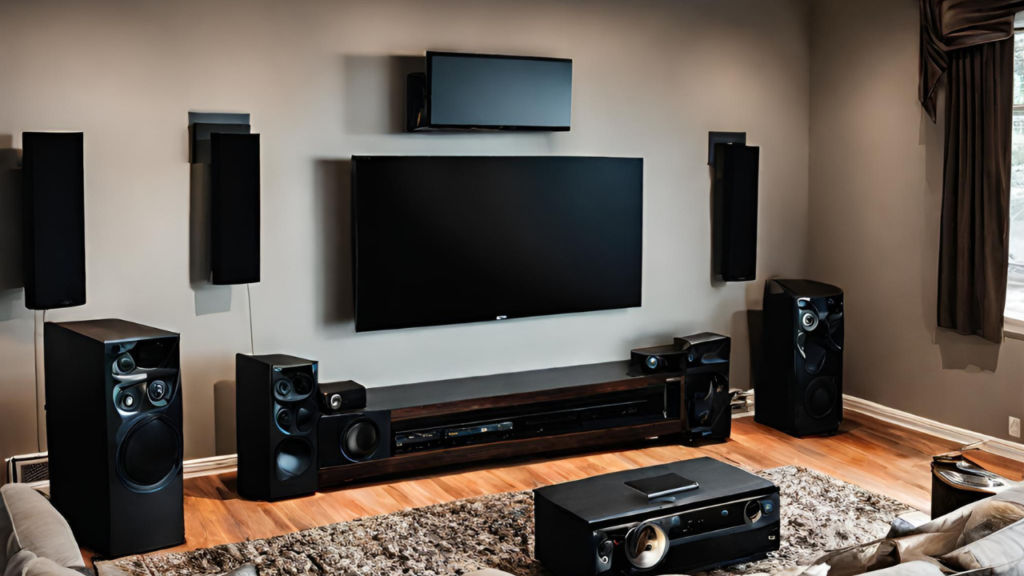
How to Setup Multi Channel Home Theater
Setting up a multi channel home theater system involves several steps to ensure that your audio and video components work together seamlessly. Here’s a step-by-step guide to help you get started:
1. Choose the Right Location:
– Select a room that is suitable for your home theater setup. Consider factors like room size, layout, and the availability of power outlets.
2. Plan Your Speaker Placement:
– Determine the optimal placement for your speakers based on your chosen audio configuration (e.g., 5.1, 7.1, Dolby Atmos).
– Place the center channel speaker near or below your TV or screen.
– Front left and front right speakers should be at ear level, equidistant from the center speaker.
– Rear speakers should be placed behind your seating area, slightly above ear level, and angled toward the seating.
– If you have overhead speakers for Dolby Atmos or similar setups, install them according to manufacturer guidelines.
3. Set Up Your AV Receiver:
– Position your AV receiver in a well-ventilated area with good airflow.
– Connect your source components (e.g., Blu-ray player, gaming console, streaming device) to the AV receiver using HDMI cables.
– Connect your speakers to the appropriate speaker terminals on the receiver.
– Connect the AV receiver to your TV or projector using an HDMI cable.
– Connect your subwoofer to the AV receiver if you have one.
4. Configure Your AV Receiver:
– Turn on your AV receiver and follow the on-screen setup wizard if it has one.
– Configure speaker settings, such as speaker size, distance from the listener, and crossover frequencies. Most AV receivers have an automatic calibration system that can help with this.
– Set up your room’s acoustics using the receiver’s EQ (Equalization) settings if available.
5. Calibrate Your System:
– Use the built-in calibration system of your AV receiver or an external calibration tool like an SPL meter.
– Follow the instructions provided to measure the sound levels and adjust speaker settings automatically.
– Fine-tune the settings manually if needed to achieve the desired audio balance.
6. Connect and Set Up Source Devices:
– Connect your source devices (e.g., Blu-ray player, game console) to the AV receiver.
– Configure the video and audio settings on your source devices to match your home theater setup.
– Ensure that you have a high-quality HDMI cable for each source device.
7. Test Your System:
– Play various types of content to test your home theater system’s audio and video performance.
– Make any necessary adjustments to optimize audio and video settings, including brightness, contrast, and color.
8. Set Up Remote Control and Smart Home Integration:
– Program your universal remote control or smartphone app to control all your home theater components.
– If applicable, integrate your home theater system with a smart home automation system for seamless control.
9. Room Decor and Comfort:
– Arrange seating and furniture for the best viewing experience.
– Consider adding blackout curtains or blinds to control ambient light.
10. Enjoy Your Home Theater:
– Sit back and enjoy your newly set up multi channel home theater system with your favorite movies, TV shows, and games.
Remember that fine-tuning your system may take some time, so don’t be afraid to make adjustments to speaker placement and settings until you achieve the desired audio and video quality. Additionally, keep your system updated with the latest firmware and software upgrades for optimal performance.
Benefits of Multi Channel Home Theater
A multi channel home theater system offers a range of benefits that enhance your entertainment experience and bring a cinematic feel to your home. Here are some of the key advantages:
1. Immersive Audio: One of the most significant benefits is the immersive audio experience. Multi-channel systems, such as 5.1, 7.1, or Dolby Atmos, use multiple speakers strategically placed around the room to create a three-dimensional soundstage. This enveloping audio enhances the realism of movies, TV shows, and video games.
2. Enhanced Movie Experience: Multi-channel audio systems are designed to replicate the sound experience of a commercial movie theater. You can hear dialogues, music, and sound effects coming from different directions, making movies more engaging and immersive.
3. Richer Sound Quality: With multiple speakers and channels, you get a wider range of frequencies and better sound quality. Subwoofers, in particular, provide deep bass that adds impact to action scenes and music.
4. Versatility: Multi-channel systems can handle a variety of audio formats, from standard stereo to high-definition audio like DTS-HD Master Audio and Dolby TrueHD. This versatility ensures compatibility with a wide range of media sources.
5. Gaming Experience: Gamers can benefit from multi-channel systems, as they provide positional audio cues that enhance gameplay. You can better locate enemies or immerse yourself in the game world’s environment.
6. Music Listening: These systems are not just for movies. Many multi-channel systems offer audio modes specifically designed for music playback, making it sound richer and more dynamic.
7. Customizable Configurations: Multi-channel systems come in different configurations, allowing you to choose the setup that suits your room and preferences. Whether you want a simple 2.1 system or an elaborate 9.1.4 Dolby Atmos setup, you can tailor your system to your needs.
8. Increased Home Value: A well-designed home theater system can increase the value of your home, making it an attractive feature for potential buyers.
9. Social Entertainment: Multi-channel systems are ideal for hosting gatherings and movie nights. The immersive experience can be enjoyed by family and friends, making it a great way to entertain.
10. Escape from the World: A home theater allows you to escape from the outside world and immerse yourself in your favorite content. It provides a private and comfortable space for relaxation and entertainment.
11. Educational Opportunities: Home theaters can also serve as educational tools, making it easier to watch documentaries, attend virtual lectures, or engage in online courses with high-quality audio and video.
12. Upgradeability: Multi-channel systems are modular and can be upgraded over time. You can start with a basic setup and expand it as your budget and preferences evolve.
13. Personalization: You have control over the audio and video settings, allowing you to tailor the system to your unique preferences. This personalization ensures that the system delivers the audio and visual experience you desire.
In summary, a multi channel home theater system offers an immersive and customizable entertainment experience that enhances the enjoyment of movies, TV shows, games, and music in the comfort of your home. It can provide both relaxation and excitement, making it a valuable addition to your living space.
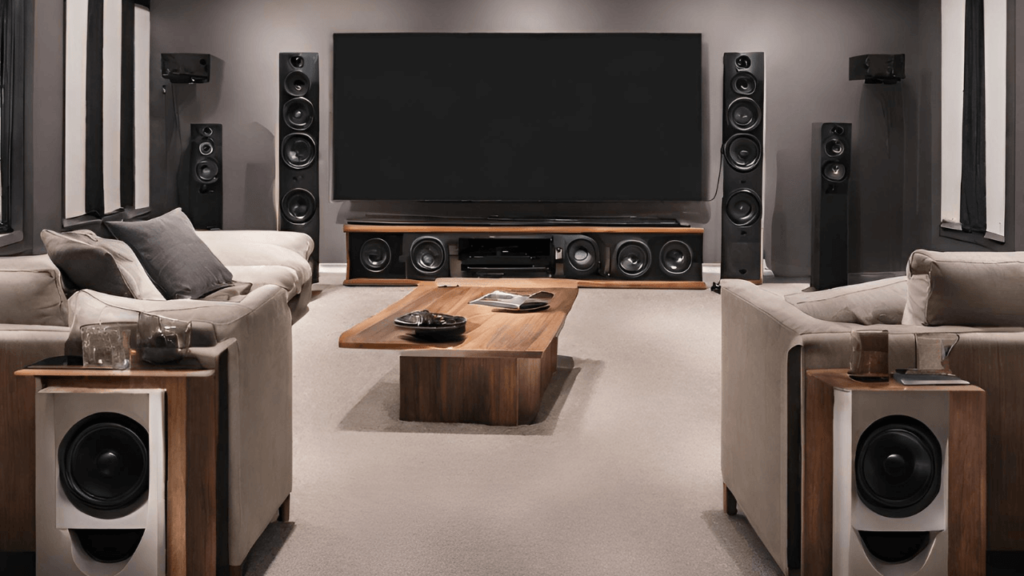
Disadvantages of Multi Channel Home Theater
While multi-channel home theater systems offer numerous benefits, they also come with some downsides and challenges that you should be aware of:
1. Cost: Multi channel home theater systems can be expensive. The cost can quickly add up when you consider speakers, an AV receiver, cables, and optional components like a projector and screen. High-quality audio and video equipment can be a significant investment.
2. Space Requirements: A multi-channel system can take up a considerable amount of space, especially if you have a large number of speakers. This can be challenging in smaller rooms where finding suitable speaker placements may be difficult.
3. Complex Setup: Setting up a multi-channel system can be complicated, especially if you’re not familiar with audio-visual equipment. Calibrating speakers, configuring the AV receiver, and managing the wiring can be time-consuming and may require technical expertise.
4. Aesthetics: The presence of multiple speakers and cables can disrupt the aesthetics of your room. Concealing wires and finding suitable speaker placements that blend with your decor can be challenging.
5. Maintenance: Multi-channel systems may require regular maintenance, including dusting and cleaning speakers, checking and updating firmware, and troubleshooting issues. It’s important to keep the equipment in good condition to maintain audio and video quality.
6. Upgrades and Compatibility: As technology advances, you may need to upgrade components to stay current with the latest audio and video formats. Ensuring compatibility between new and existing equipment can be a challenge.
7. Limited Content: While many movies, TV shows, and games support multi-channel audio, not all content is created equal. Some older or low-budget media may not take full advantage of the multi-channel setup, resulting in a less immersive experience.
8. Noise and Disturbance: Loud audio can disturb neighbors or other household members, especially in shared living spaces or apartments. It’s important to be considerate of noise levels, which may limit when you can fully enjoy your home theater system.
9. Initial Learning Curve: If you’re new to home theater systems, there may be a learning curve as you familiarize yourself with the setup and operation of the equipment. This can lead to frustration and may require some patience.
10. Limited Portability: Multi-channel systems are not easily portable, so you can’t easily move your home theater setup to different rooms or locations.
11. Room Acoustics: Achieving optimal sound quality depends on the acoustics of your room. In some cases, room shape, size, and materials can impact audio performance, requiring additional acoustic treatments or adjustments.
12. Maintenance Costs: Over time, speakers and other components may require repairs or replacements, which can be an ongoing expense.
Despite these downsides, many people find that the benefits of a multi channel home theater system, such as the immersive audio and cinematic experience, outweigh the drawbacks. Careful planning, proper setup, and maintenance can help mitigate some of these challenges, making your home theater system a valuable addition to your entertainment space.
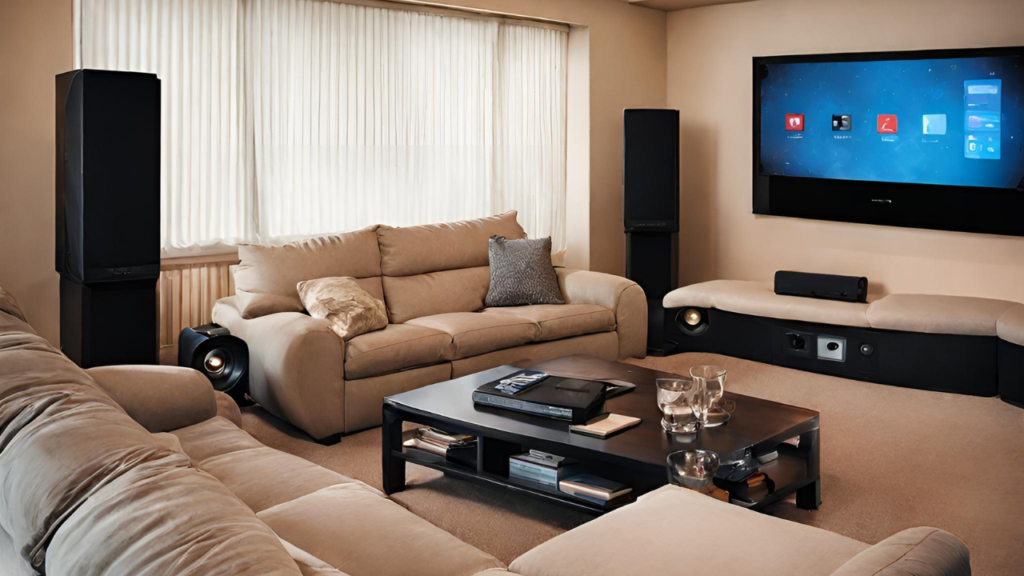
Find The Best Multi Channel Home Theater For You From Amazon
FAQs of Multi-Channel Home Theater
Certainly! Here are some frequently asked questions (FAQs) related to multi channel home theater systems:
1. What is a multi-channel home theater system?
– A multi-channel home theater system is a setup designed to provide a cinematic audio and visual experience in the comfort of your home. It typically consists of multiple audio channels, speakers, and a high-definition video display or projector.
2. How many speakers do I need for a multi-channel system?
– The number of speakers depends on the specific configuration you choose. Common setups include 2.0, 2.1, 5.1, 7.1, 9.1, and more. The “X.1” format indicates the number of main speakers plus a subwoofer.
3. What is the role of the AV receiver in a multi-channel system?
– An AV (audio-video) receiver is the central component that processes and amplifies audio and video signals from source devices (e.g., Blu-ray players, game consoles) and routes them to the speakers and display. It also often includes audio decoding capabilities for different formats.
4. How do I set up a multi-channel home theater system?
– Setting up a multi-channel system involves choosing the right location, speaker placement, connecting components, configuring the AV receiver, calibrating the system, and fine-tuning audio and video settings. It can be a complex process, so many people seek professional installation or follow setup guides provided by manufacturers.
5. What are the benefits of a multi-channel home theater system?
– Some benefits include immersive audio, enhanced movie experiences, richer sound quality, improved gaming, versatility for various audio formats, and the ability to customize configurations to suit your preferences.
6. Are soundbars considered multi-channel systems?
– Some soundbars can be configured as multi-channel systems, such as 3.1 or 5.1 setups, by including a subwoofer and virtual surround sound processing. However, traditional soundbars with only two or three speakers are not typically classified as multi-channel.
7. What is Dolby Atmos and how does it differ from traditional multi-channel audio?
– Dolby Atmos is an advanced audio format that adds height or overhead speakers to traditional multi-channel systems. It allows sound to move freely in a three-dimensional space, providing a more immersive audio experience with objects-based audio. Traditional multi-channel systems rely on fixed channels.
8. Can I use wireless speakers in a multi-channel system?
– Yes, many modern multi-channel systems support wireless speakers, making it easier to set up and configure your system without the need for extensive cable runs. Wireless speaker options may include Bluetooth, Wi-Fi, or proprietary wireless technologies.
9. Do I need a 4K-compatible AV receiver for my 4K TV?
– Yes, if you have a 4K TV and plan to watch 4K content, it’s recommended to have a 4K-compatible AV receiver. This ensures that the receiver can pass through 4K video signals without degradation.
10. Can I integrate my home theater system with smart home automation?
– Yes, many home theater components can be integrated into a smart home automation system, allowing you to control lighting, curtains, and even your AV equipment with a single interface or voice commands.
These FAQs provide a starting point for understanding multi-channel home theater systems, but setting up and configuring a system can be complex. It’s often a good idea to consult with experts or follow manufacturer guidelines to ensure the best performance from your home theater setup.

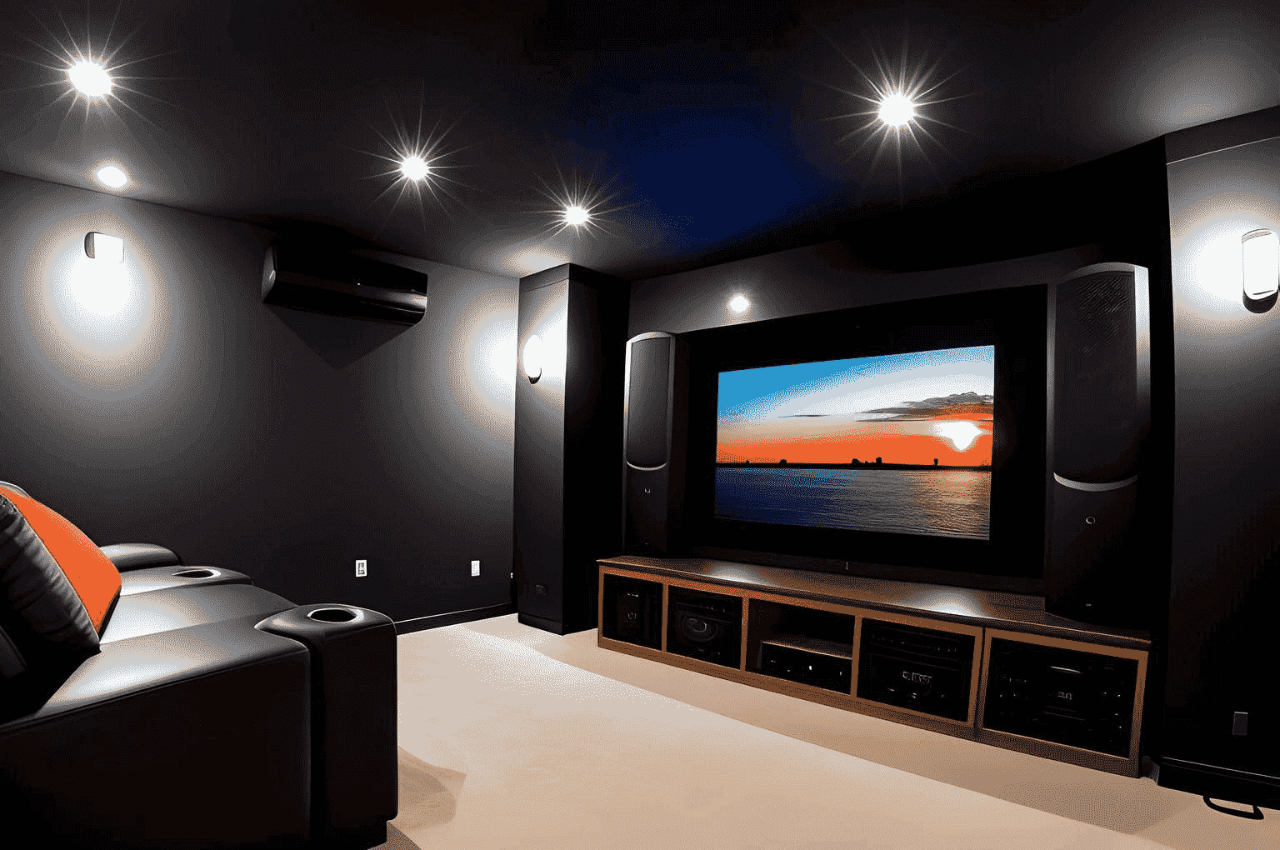
Al great deal for a web developer. Details: https://zetds.seychellesyoga.com/var_montero